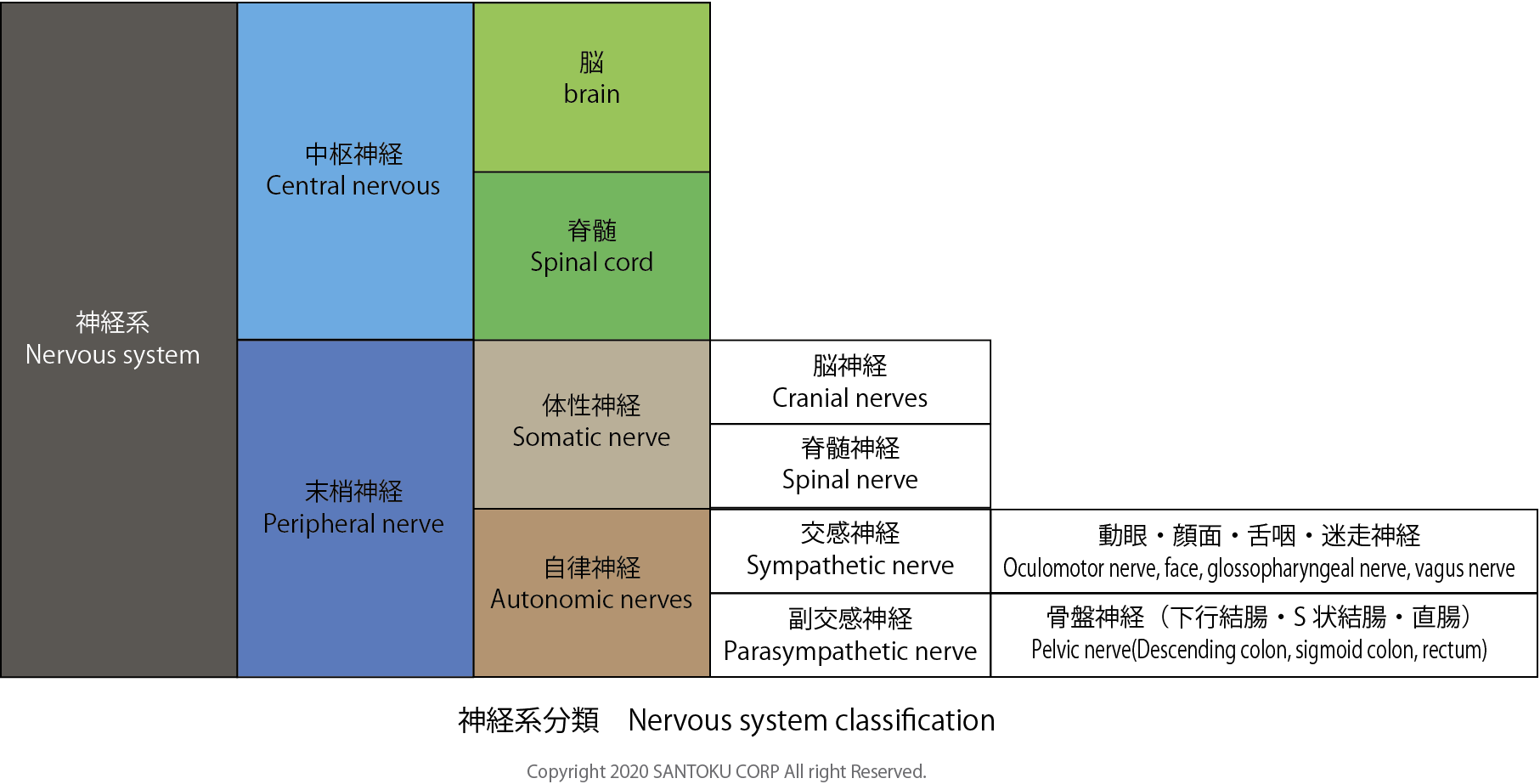External stimuli input through the sensory system are transmitted through neural circuits. The brain is a part of the nerve and is the central nervous system, and the peripheral nervous system enters and exits from the central nervous system. In this way, external stimuli work on humans through the mechanism of the nervous system.

The peripheral nerves are composed of the somatic nervous system (somatic nervous system and voluntary movements) and the autonomic nervous system (connecting the brain and internal organs). Emotion is a strong feeling that is triggered by an external stimulus and is accompanied by a physical reaction. The transmission of the external stimulus involves the autonomic nervous system, and the sympathetic nervous system and the parasympathetic nervous system. ] Is transmitted through the emotional reaction homeostasis “homeostasis” is activated.
Transmission of the autonomic nervous system is carried out by neurotransmitters. Transmission hormones secreted by the brain are transmitted at high speed through the nervous system to generate emotions. At the same time, the transmissive hormone secreted by the organs is carried by the blood and transmitted over time, and sensory analysis is performed to recognize it. In this way, emotions and cognition are born along with the reactions transmitted by the two systems. After that, emotions turn into emotions. This mechanism creates emotions, but it takes some time to generate them.
The autonomic nervous system works closely with the brain and internal organs. Records that are triggered by external stimuli and stored in the body are called and collated (what is called animal intuition) and are recognized and emotions are generated. This is the mechanism by which emotions generate emotions.
No tags for this post.No tags for this post.